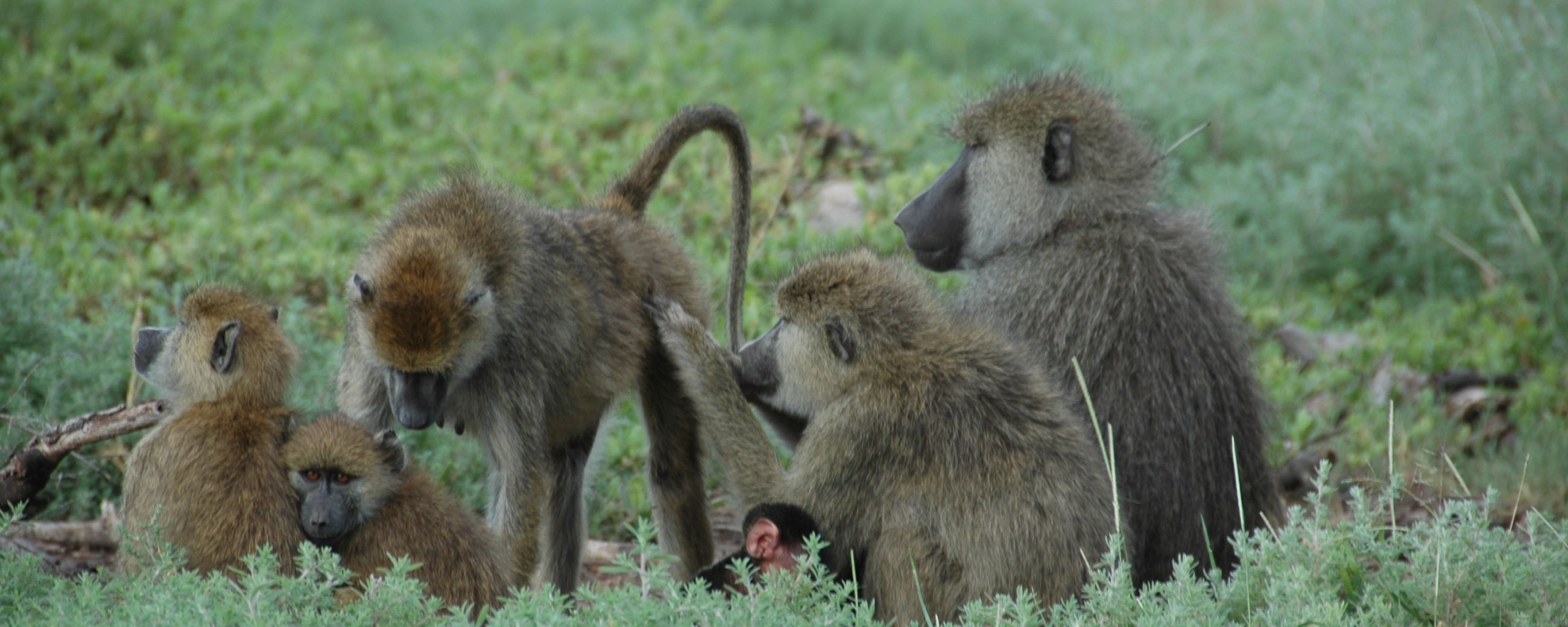A new publication by an international group of scholars (including DUPRI's Susan Alberts and Jenny Tung) and partially funded by a DPRC pilot grant examines how early adversity affects adult body size in wild female baboons.
In many taxa, adverse early-life environments are associated with reduced growth and smaller body size in adulthood. However, in wild primates, very little is known about whether, where, and to what degree trajectories are influenced by early adversity, or which types of early adversity matter most. Here, the authors use parallel-laser photogrammetry to assess inter-individual predictors of three measures of body size (leg length, forearm length, and shoulder-rump length) in a population of wild female baboons studied since birth.
Using >2000 photogrammetric measurements of 127 females, the authors present a cross-sectional growth curve of wild female baboons (Papio cynocephalus) from juvenescence through adulthood. They then test whether females exposed to several important sources of early-life adversity—drought, maternal loss, low maternal rank, or a cumulative measure of adversity—were smaller for their age than females who experienced less adversity. Using the “animal model,” the authors also test whether body size is heritable in this study population.
Prolonged early-life drought predicted shorter limbs but not shorter torsos (i.e., shoulder-rump lengths). Other measures of early-life adversity did not predict variation in body size. Heritability estimates for body size measures were 36%–67%. Maternal effects accounted for 13%–17% of the variance in leg and forearm length, but no variance in torso length.
The results suggest that baboon limbs, but not torsos, grow plastically in response to maternal effects and energetic early-life stress. The results also reveal considerable heritability for all three body size measures in this study population.
